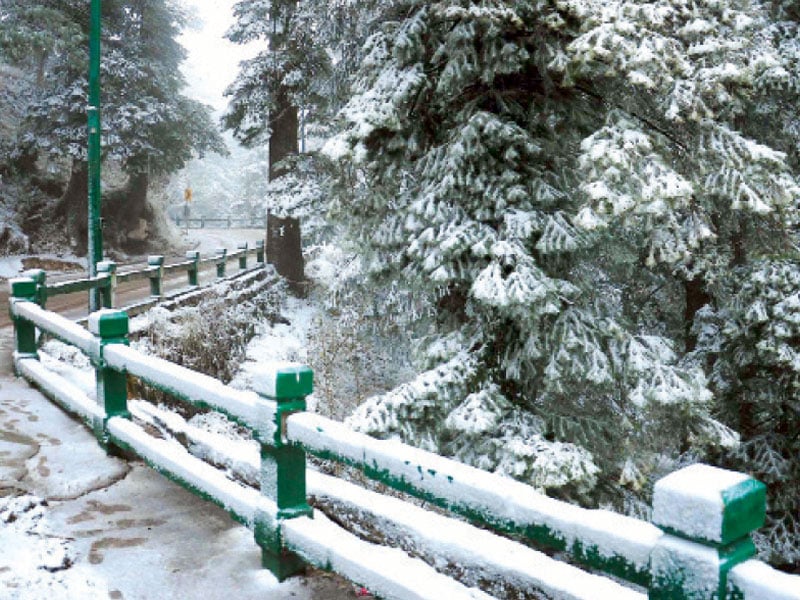Delayed drain cleaning ups flood risk
As KMC awaits funds, experts warn large parts of the city could be inundated if unclogging operations are not launched

With the Pakistan Meteorological Department forecasting above-normal rainfall in Karachi and other parts of Sindh, the city remains ill-prepared for the monsoon season as storm water drains remain uncleaned due to the delayed release of funds by the Sindh government.
Sources have revealed to The Express Tribune that despite repeated warnings and past experiences of urban flooding, the Karachi Metropolitan Corporation (KMC) has not received the required funds for comprehensive cleaning of the city's drainage network comprising of 586 storm drains, including 41 major ones under its jurisdiction.
Experts have warned that the delay has already undermined the effectiveness of any upcoming cleaning efforts, as drains cannot be thoroughly cleared in a limited timeframe. "The monsoon season is just around the corner. If cleaning doesn't begin now, large paths of Karachi could be submerged," said an official close to the matter.
Deputy Director of the Pakistan Meteorological Department, Anjum Nazir Saigham, confirmed that Karachi and interior Sindh were likely to receive 20 to 30 per cent more rainfall than average this season. "We have already issued alerts to all concerned agencies about the high risk of urban flooding in Karachi and flash flooding in parts of interior Sindh," said Saigham.
Historical data reinforces these warnings. In July 2022 alone, the Mauripur observatory recorded 584mm of rain, with a total of 757mm for the monsoon season. A single-day record of 230mm was set on August 27, 2020; the day that brought the port city to a standstill.
KMC's Senior Director of Municipal Services, Abdul Hannan, confirmed that a funding request had been sent to the Sindh government, though he declined to specify the amount. According to a senior municipal officer, KMC has sought Rs650 million for the current season, in line with requests made in previous years, which ranged from Rs600 to Rs800 million. "Unfortunately, the provincial government has never released the full amount. Typically, Rs400 to Rs450 million are provided, and that too when the rains are already upon us," said the official.
It is worth mentioning that although partial cleaning under KMC's annual maintenance contract began in May, full-scale work will only commence once funds are released and new contracts awarded. A KMC report identified 19 key locations where rainwater accumulates several feet deep every monsoon season. These include I.I. Chundrigar Road, Shahrah-e-Faisal (Nursery, Jinnah Bridge, FTC Flyover), Civic Centre, NIPA Chowrangi, Rashid Minhas Road, and parts of Gulistan-e-Johar and Liaquatabad.
Other historically flood-prone areas include Nagan Chowrangi, Banaras, KDA Chowrangi, Safoora Goth, Surjani, Thado Dam, and Palm Village Malir. In addition, The Express Tribune has received reports of at least 30 other vulnerable neighbourhoods including Jehangir East & West, Martin Quarters, Korangi Industrial Area, Qayyumabad, Noorani Mohalla (New Karachi), Liaquatabad No. 4 and 10, Water Pump, and Cheel Chowk in Lyari, which face a high risk of flooding if preventive measures are not taken immediately.
Urban planner Dr Syed Nawaz Al-Huda called for systemic reforms beyond emergency cleaning. "The tradition of dumping garbage into drains must end. The Sindh Solid Waste Management Board should ensure daily waste collection and removal to landfill sites. Separating sewer lines from storm water drains could save the government millions of rupees by preventing future crises. Storm water should drain from city roads within 30 minutes - which is the global standard. In Karachi, however, due to poor planning, water takes three to four hours to drain out," highlighted Dr Al-Huda.




















COMMENTS
Comments are moderated and generally will be posted if they are on-topic and not abusive.
For more information, please see our Comments FAQ